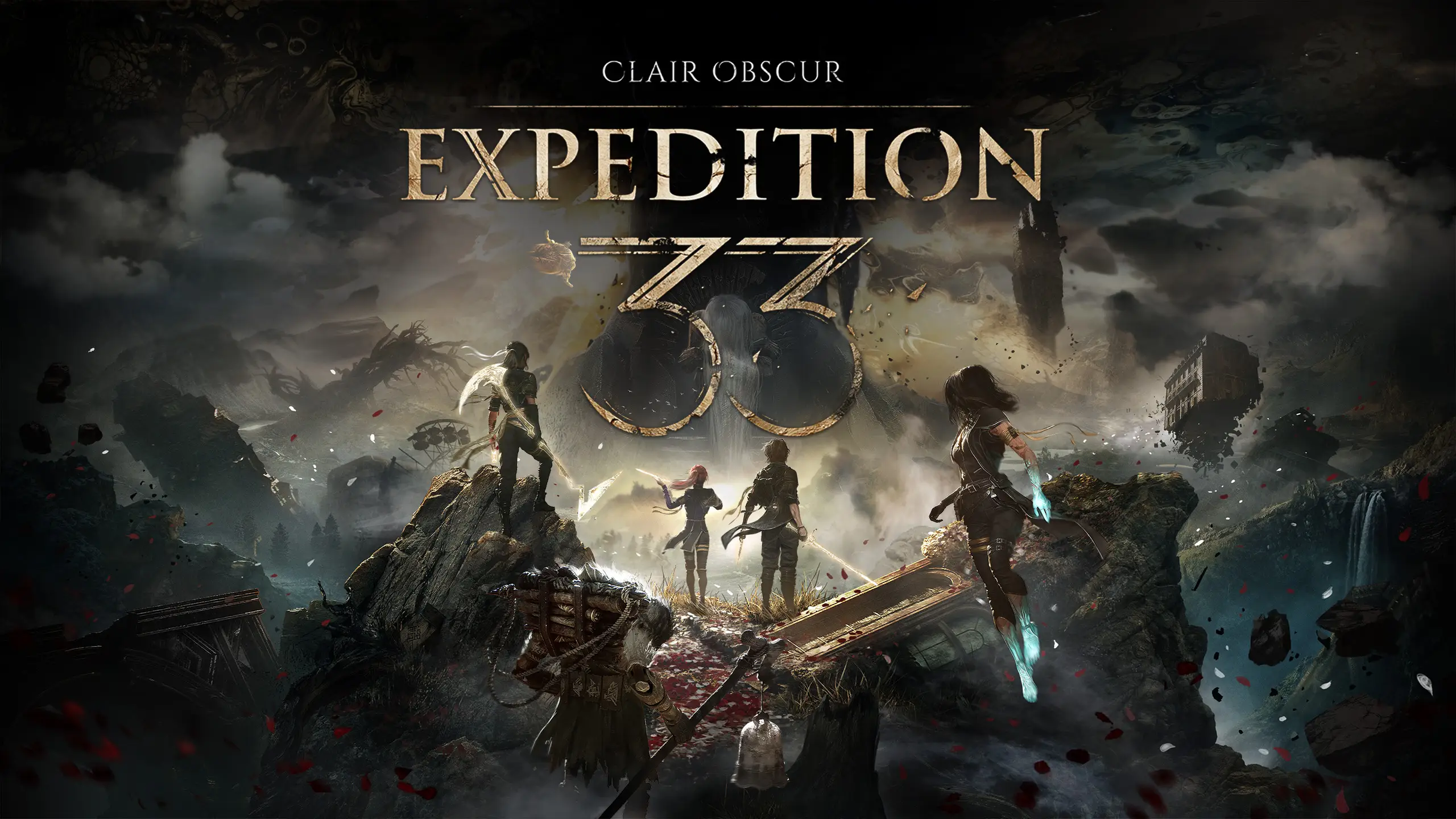Clair Obscur: Expedition 33, created by French studio Sandfall, marks its debut by channeling the essence of iconic Japanese RPGs both old and new. Rather than merely imitating, it utilizes these inspirations to build a compelling experience that proudly stands on its own. From the visually impressive and mechanically deep turn-based combat to its melodramatic yet heartfelt storytelling, the game evokes familiarity while establishing its identity. Sandfall’s confidence in embracing these tropes allows it to shape something emotionally potent and stylistically distinct—a melancholic yet hopeful journey that lingers long after its conclusion.
A World Defined by a Painting and a Countdown
The narrative is set in Lumiere, a realm trapped in a strange fate. Once every year, a deity-like being known as The Paintress writes a number on a far-off tower. That number marks the age at which every person in the world will simply cease to exist. The player leads a group of determined individuals who have joined the 33rd expedition to confront and stop The Paintress—a mission attempted many times before, with not a single group returning. This premise casts a heavy shadow over the entire story, imbuing each moment with a sense of purpose and sorrow. The expedition is, in essence, a death march, and the game invites the player to invest deeply in the fate of these doomed travelers and the mysteries shaping their world.
Focused Storytelling Without Wasted Time
The main story and a substantial amount of optional content take approximately 35 hours to complete. This duration reflects a tightly constructed experience. Unlike many RPGs that feature filler or drawn-out exposition, Clair Obscur tells its story concisely. Character development unfolds naturally through conversations, facial expressions, and interactions, rather than relying on long monologues. While slower-paced RPGs offer moments to pause and absorb the world, the urgency that pulses through Clair Obscur creates a momentum that works well. For players accustomed to 80+ hour RPGs, the relatively brisk pace is a refreshing contrast without feeling incomplete.
Combat That Remains Sharp Throughout
Because of the game’s compact length, its combat never becomes tiresome. The UI and menu design may immediately remind some of certain stylish RPG franchises, but its combat mechanics truly distinguish it. There’s a real-time component to turn-based action—timing button presses can enhance spells or allow characters to dodge incoming attacks. This mechanic, reminiscent of systems found in other action-tinged RPGs, keeps players engaged even during enemy turns. The ability to stay involved throughout every turn creates a rhythm that makes combat tense and rewarding.
Rhythm-Based Combat That Demands Focus
Success in battles, particularly against powerful bosses, depends heavily on recognizing and responding to visual and auditory cues. This design calls to mind timing-based action games where precise inputs are required to parry or dodge. Combos often involve varied rhythms between hits, and mastering this timing is crucial. Early encounters with such mechanics may feel frustrating due to trial and error, but learning the attack patterns introduces a level of intensity uncommon in turn-based RPGs. Dodging allows for a wider margin of error, but parrying requires perfect timing—and when executed correctly, the game slows down dramatically, delivering a satisfying cinematic counterattack that turns the tide in combat.
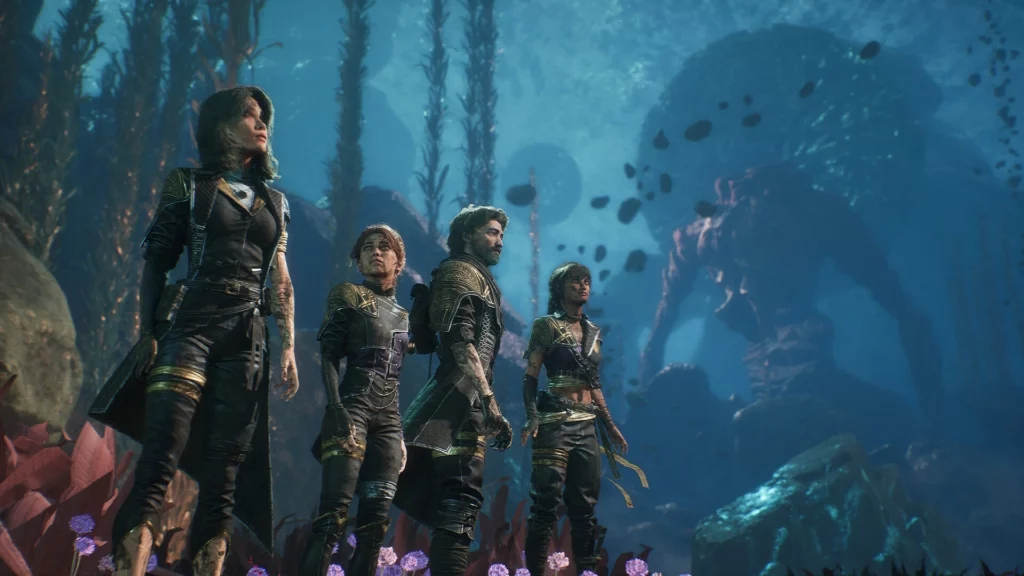
Distinct Characters with Unique Mechanics
Every character in the party contributes a different tactical function. Gustave, for example, builds up charges with each hit and can expend them to enhance his Overcharge ability. Lune specializes in elemental magic, accumulating specific elemental “stains” by casting spells and unlocking higher-damage abilities through careful stacking. Maelle adopts various stances depending on her weapon and status conditions, making her capable of dishing out the most damage under the right circumstances. Then there’s Sciel, a scythe-wielding fighter whose gameplay revolves around managing light and dark phases and a deck of cards, evoking a blend of astrologer and reaper-like job classes.
Two additional characters introduced later in the game expand these mechanics even further. One of them integrates a grading system for attacks and dodges similar to an action-combat style, while another has the ability to absorb magic from defeated enemies, mimicking the traits of a classic spell-stealing mage. These characters add fresh strategies late in the game, reinforcing the sense that each party member is uniquely valuable.
Tactical Depth Within Reach
The game’s skill trees are designed with clarity and simplicity, granting players a limited number of abilities but encouraging mastery of how those skills function and combine. Rather than overwhelming players with choices, the game emphasizes setting up and exploiting combat conditions—whether through status effects, attack chains, or synergy between characters. The tactical focus deepens as fights progress, requiring constant adaptation. Opening with a routine setup is common, but battles often evolve into layered engagements demanding responsive tactics and careful planning.
The Role of Pictos and the Introduction of Lumina
Beyond standard character customization, Clair Obscur features a system called Pictos—attachments that offer various benefits. These range from boosting stats and AP regeneration to modifying how status effects or dodges function. Using a Picto long enough eventually leads to the development of a corresponding Lumina, which applies those effects more broadly. While navigating the interface for Pictos can be frustrating due to the volume of available options (more than 50 crammed into a dense menu), mastery of this system pays off. Once players become fluent in its language, assembling effective builds becomes a deeply satisfying part of preparation—especially for tougher encounters where an optimized setup can make or break a fight.
Initially, some players may find themselves overpowered, especially in the early sections of the game. The first third of the campaign is relatively easy to steamroll, with only a few optional bosses providing real resistance. However, the difficulty curve climbs steadily. As new layers of combat complexity are introduced, players are challenged to rethink their party compositions and adapt their strategies. Boss fights evolve in design, involving status effects, shield mechanics, and new gameplay elements like timed jumps and the “Gradient Counter”—a rhythm-based action that adds an extra dimension to survival.
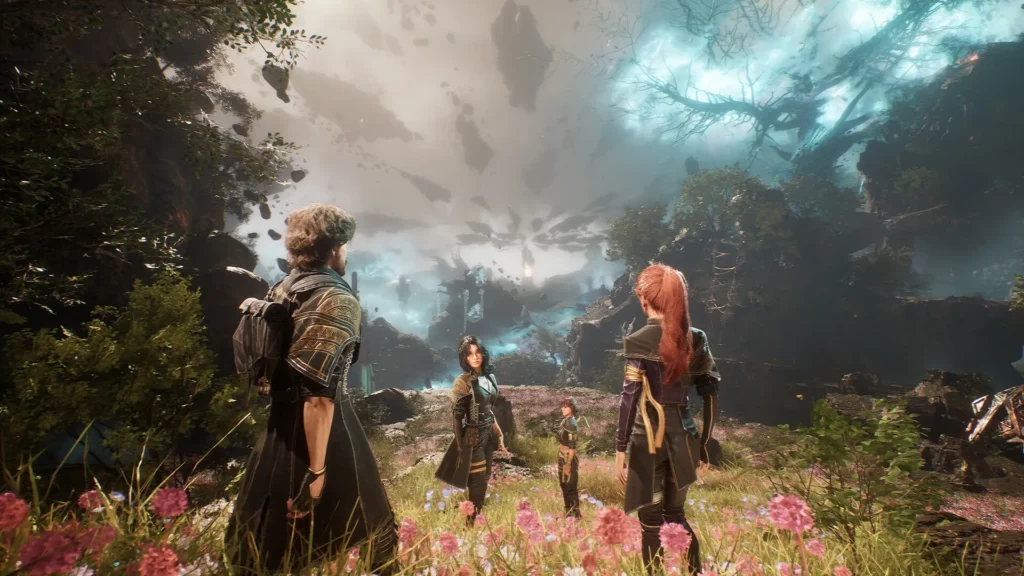
Complexity with a Clear Focus
Despite its mechanical depth, Clair Obscur avoids becoming overly complicated. The systems are interconnected but remain approachable, allowing players to experiment and push boundaries without breaking immersion. For those who dive into its mechanics, there’s room to “break the game” in a creative and intentional way. This doesn’t come across as exploitative, but rather a reward for those who understand how to fully leverage the game’s systems. Even though the combat may have room to grow in future installments, what is already present ranks among the most enjoyable turn-based systems in recent memory.
An Overworld That Honors the Past
The structure of the overworld evokes a classic RPG charm. Oversized character models traverse a stylized map dotted with hidden areas, optional zones, and inaccessible locations that later open up as new travel options become available—reminiscent of gaining vehicles or companions in vintage RPGs. Floating islands, towering beasts in the distance, and scattered secrets build a sense of mystery and excitement. Side content includes challenging superbosses, humorous minigames offering exclusive rewards, and extra story content that deepens the lore. This content can easily add an extra 20 hours to the game. The lack of a traditional quest log means progress is sometimes hard to track, but it reinforces the old-school notion that exploration and discovery should feel organic.
Linear Dungeons That Make an Impression
Each major location functions like a dungeon, taking players along a relatively fixed route with side paths for hidden loot. Although the layout can be confusing without a minimap—particularly as environments start to blend together—the flow ensures that narrative pacing remains tight. Enemies reappear after using rest points, which double as checkpoints and healing stations. Exploration is limited compared to open-world games, but this focus enhances the rhythm of storytelling and gameplay. Visually, these areas are striking—whether they depict serene, otherworldly landscapes or grim war zones filled with the remains of fallen expeditions, the environments make a lasting impression.
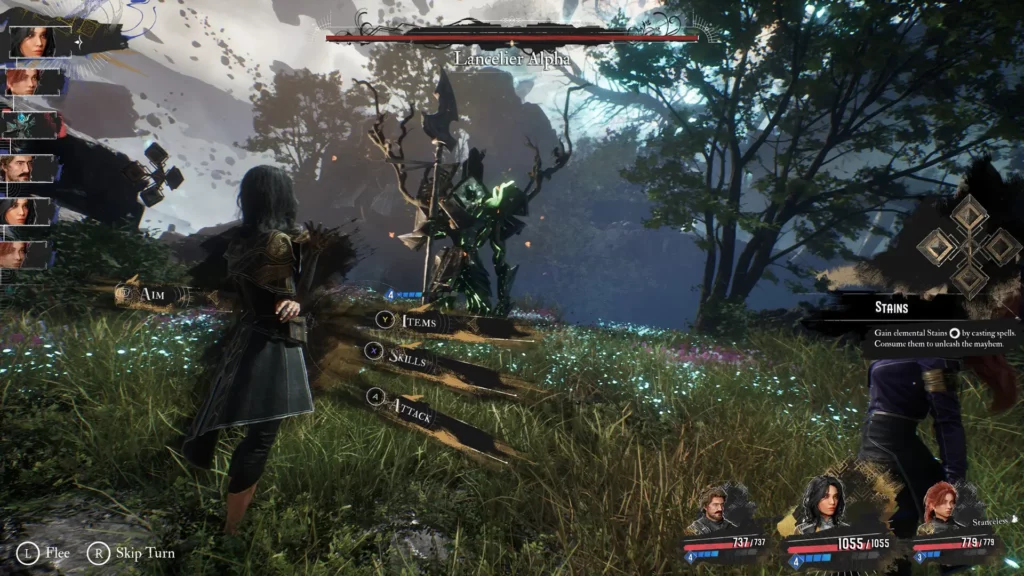
A Story Grounded in Performance and Emotion
Clair Obscur earns its place in the pantheon of story-driven RPGs with its emotional themes. Central to the narrative are reflections on mortality, the sacrifices made for future generations, and the destructive potential of unresolved grief. The game explores how loss can isolate and corrode, but also how it can inspire. There’s a thematic richness to how art, memory, and personal suffering intersect, drawing parallels between fiction and the real world.
The quality of the voice acting plays a crucial role in making this story resonate. Performed by a stellar cast, the delivery is grounded in realism. The dialogue flows naturally, supported by subtle animations and expressive performances that make characters feel genuinely human. These nuances elevate the material and give it emotional weight. Stylistically, the narrative leans toward theatrical storytelling—more akin to a dramatic stage production than a conventional blockbuster—and this direction adds to its emotional impact.
Balancing Darkness with Humor
Despite its serious tone, Clair Obscur isn’t afraid to lighten the mood. The world is populated by wooden beings called Gestrals, who provide both comic relief and a means to convey lore. Party banter around the campfire reveals softer sides of characters and builds camaraderie. While not every humorous moment hits perfectly, these segments are necessary to balance the overarching grief that drives the story. At times, the narrative indulges a bit too much in its sorrow, veering into melodrama, but it quickly recovers by embracing its distinct tone—one more aligned with theatrical tragedy than cinematic spectacle.
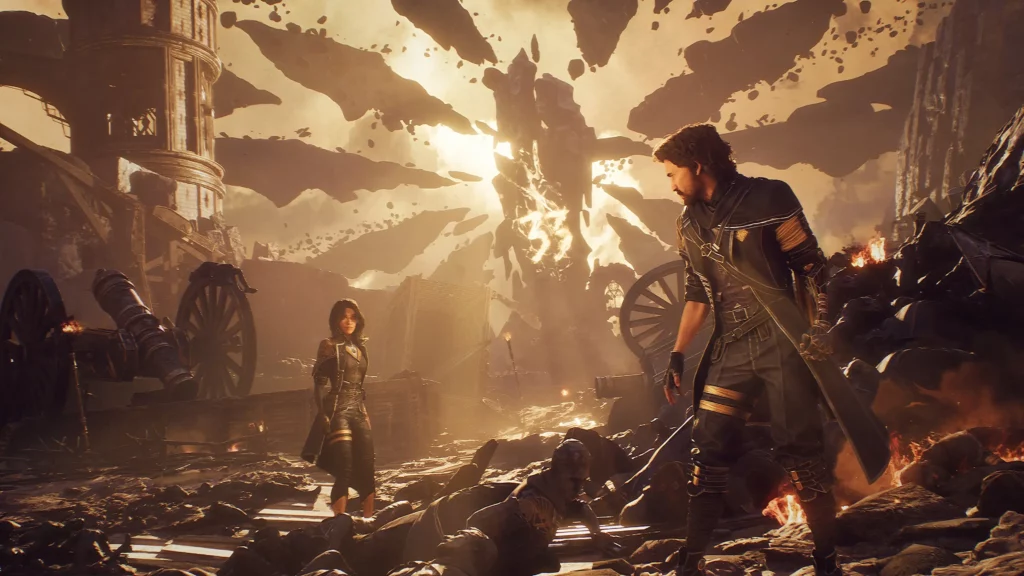
A Love Letter to French Art and Music
The artistic influence of French history is apparent throughout the game. From Belle Époque aesthetics to the seamless integration of French dialogue and motifs, the game feels like an expression of national cultural identity. Elements of theatre, painting, and dance are present in the narrative and world-building. Music, however, stands as the strongest artistic element. The soundtrack spans sweeping orchestral arrangements, operatic performances, rock-infused themes, and ambient synthesizers. Every track enhances the emotional tone of the moment, from intense battles to melancholic reflections. Some pieces are so fleeting they don’t linger long enough to become iconic, but the overall score is rich, evocative, and unforgettable.
Final Verdict: A Modern RPG with Classic Soul
Clair Obscur: Expedition 33 evokes the spirit of beloved RPGs while establishing its own voice. Its turn-based combat system is one of the most dynamic and engaging in recent memory, driven by an interplay of skill, timing, and strategic thinking. The narrative can sometimes falter with abrupt developments or indulgent emotion, but it never loses its heart. With powerful performances, a strong aesthetic vision, and deeply resonant themes, the game manages to marry classic RPG design with modern narrative sophistication. Sandfall has not only paid homage to its inspirations but contributed something valuable and lasting to the genre—offering a game that, much like its name, is both clear in purpose and obscured in mystery.
